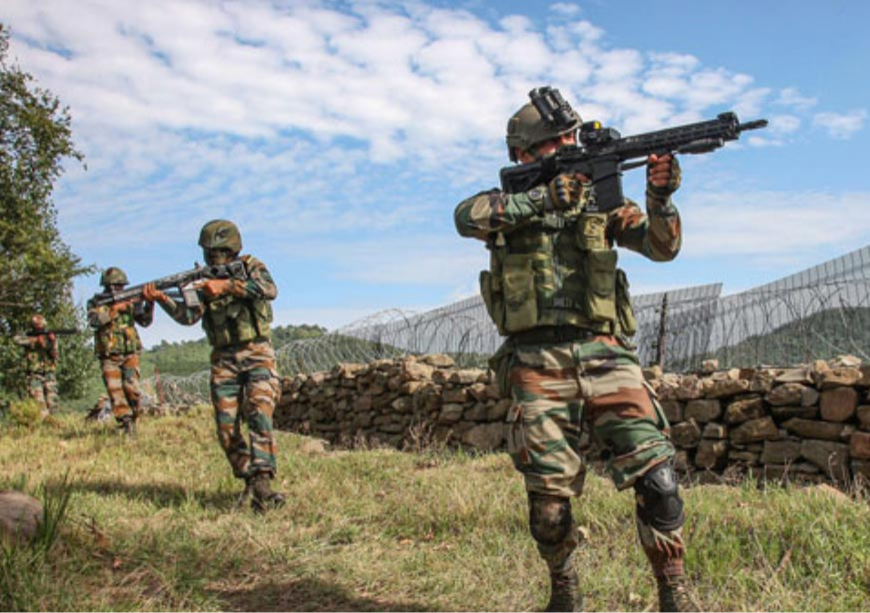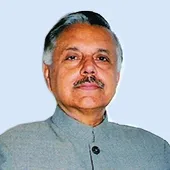
It is a universally accepted truism that militaries the world over display an uncanny propensity for reluctance towards ushering change in their basic structures, operational concepts, and methods of warfighting, SOPs confronting tactical challenges, and social habits, amongst others. Time-honoured traditions do rule the roost in many military customs and practices. While most of these aforesaid aspects may deserve preserving, constant assessment of the factors enhancing security and operational preparedness, the challenges emerging across new domains of warfare, and the cost-effective employment of the latest technologically-driven weaponry and platforms need to be undertaken to prepare the armed forces for future confrontations.
Notwithstanding India’s victory in the Pakistan Army-engineered Kargil War in 1999, India realised the need for defence reforms. The Kargil Review Committee (KRC) headed by Dr K Subramanyam suggested many path-breaking and long-awaited reforms which were duly approved by the then-appointed Group of Ministers in 2001 in the Vajpayee government.
The current impasse on the exact restructuring of the number of, shape, size and operational responsibilities of the proposed ITCs continues to bedevil the three services.
Among the many reforms suggested by the KRC for Higher Defence Management was the creation of the post of Chief of Defence Staff (CDS) to render single-point defence advice to the government, and, the dire need to achieve the necessary jointness and operational synergy among the three services—the Indian Army, Navy and Air Force. After much debate, the three services concluded that the concept of Integrated Theatre Commands (ITCs) would be the answer to achieving critical jointness among the services. The fact that even today this major step in restructuring has not been implemented displays the ongoing professional chasm between the three services. Meanwhile, the government in August 2023 passed in Lok Sabha the Inter-Services Organisation ( Command, Control, Discipline ) Bill terming it “A series of military reforms being undertaken by the government to empower the nation.” Many defence experts consider it as a precursor to the creation of ITCs. Nevertheless, the current impasse on the exact restructuring of the number of, shape, size and operational responsibilities of the proposed ITCs continues to bedevil the three services. That there is no easy answer to the problem and mutual acceptability among the three remains non-existent is more than evident.
When the United States (US) encountered a similar situation, the US defence establishment stepped in and then via the Goldwater Nichols Act of 1986 it ushered in a massive changeover and restructuring of their armed forces. This Act vastly reorganised the US Department of Defense to improve military advice to the US President and their Secretary of Defense and placed clear-cut responsibilities on the commanders of their specified and unified combat commands. The Indian Armed Forces also need to look inward and sort out their restructuring as best strategically, operationally, technologically, and financially possible. The fact that for restructuring our armed forces, we need not blindly follow any foreign forces template but create one suitably adapted to our operational requirements brooks no elaboration. The Chinese have established only one theatre command against India while the US has eleven geographic and functional commands owing to their self-assigned global responsibilities.
The Indian Armed Forces also need to look inward and sort out their restructuring as best strategically, operationally, technologically, and financially possible.
There can be no two opinions that the Indian Armed Forces, confronting present challenges and those likely in the foreseeable future, have to be fully geared up to ensure security preparedness 24/7 in a two-front war and also must have some capabilities for a counter-insurgency/internal security scenario. Currently, the Indian Armed Forces has 17 C-in-C level Commands ( seven each with the Army and IAF, three with the Indian Navy) and two joint integrated commands, namely the Andaman and Nicobar Command and the nuclear responsible Strategic Forces Command. In addition, India has the Defence Cyber Agency and the Defence Space Agency which can be elevated to a Command level along with raising a Special Operations Command. This step will ensure that the current 19 C-in-C level 3-star officers are suitably accommodated. In addition, as we gradually go in for the larger geographically responsible commands, there is a case for some of these larger commands to be led by 4-star general officers and equivalents. The CDS must be a 5-star equivalent. In addition, the CDS should have the three chiefs under them and all must have operational responsibilities. Aspects of recruitment, training, logistics, etc. can be looked after by 3-star officers already authorised to the services.
Many models for restructuring have been suggested within the establishment and by defence experts. Without even the slightest loss of our overall operational capabilities, we can consider having (east onwards) an Eastern Theatre Integrated Command (primarily against China and also looking after Myanmar, Bangladesh, and Bhutan). A Central Theatre to look after Nepal, Uttarakhand, a Northern Theatre looking after Tibet, China, portions of Gilgit-Baltistan and Pakistan-occupied Kashmir (POK) including Jammu and Kashmir (J&K). We may have the Western Integrated Theatre Command in the South of J&K which would be responsible from Pathankot including Punjab and northern portions of the desert sector to cover West Pakistan. It could be followed by the Southern Command which also coopts the current SW Command. The geographical divisions to include Sindh, Karachi, and subsequently Sri Lanka and the western seaboard, amongst others, can be finalised later.
The Indian Navy will have to be ready to play a major role in the Indian Ocean and look after the sea lanes heading towards the Malacca Strait, much of South East Asia and onwards towards Japan.
The Navy could have under its responsibility two integrated commands—one each for the western and eastern seaboards. It needs to be further explored whether The Andaman and Nicobar Command should be subsumed by the Navy’s Eastern Command. It must be noted that the West Asian waters are crucial for India’s oil supply; it has lately seen turbulence due to the ongoing Israel-Iran-Hamas conflict. In addition, the Chinese disregarding internationally accepted law of the seas for freedom of navigation in international waters. The Indian Navy will have to be ready to play a major role in the Indian Ocean and look after the sea lanes heading towards the Malacca Strait, much of South East Asia and onwards towards Japan. One solution could be that Eastern Theatre Command looks after the ground and aerial aspects while the entire Bay of Bengal and the Indian Ocean region is made the responsibility of the Andaman and Nicobar Command.
Allocation of each service responsibility or its rotation for leading the respective Commands is a matter of careful evaluation and can be evaluated judiciously by a battery of service experts, even retired and even taking impartial counsel of civilian-military thinkers in the country. Nevertheless, we can commence with reorganising the Eastern Theatre Integrated Command first, evaluate its functioning for two years or so, and then gradually restructure the entire edifice one by one, ensuring no gaps in India’s overall defence preparedness. The Eastern Theatre Command will uniquely have all three services being represented and thus will be the ideal to test the efficacy of the Integrated Command.
One solution could be that Eastern Theatre Command looks after the ground and aerial aspects while the entire Bay of Bengal and the Indian Ocean region is made the responsibility of the Andaman and Nicobar Command.
As an emerging global and regional power, India’s military preparedness has to keep pace with newer challenges across all domains of warfare and thus the restructuring of its antiquated Defence structures is sine qua non. This critical restructuring should not be further delayed. By concerted inter-services thinking and a vision for the future, India’s overall security preparedness must be of the highest order given its growing regional and global responsibilities.
Lt Gen Kamal Davar was the first Chief of India’s Defence Intelligence Agency and is a noted strategic analyst.
The views expressed above belong to the author(s). ORF research and analyses now available on Telegram! Click here to access our curated content — blogs, longforms and interviews.




 PREV
PREV


